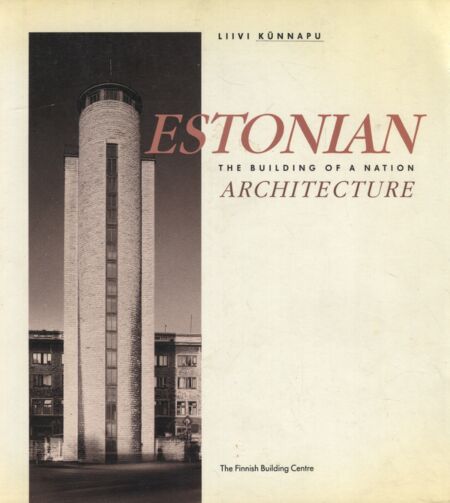Estonian architecture
This book provides an overview of Estonian architecture from the turn of the century to the present day. During the closing years of Czarist rule in the early 1900s, Estonian architects drew inspiration from Jugend and Finnish National Romanticism. In the 1920s and '30s the architectural syles of independent Estonia reflected the international mainstream – Functionalism and Classicism. This marked the beginning of a modern Estonian architecture which existed alongside official Soviet styles, and which saw a second heyday in the 1980s with the advent of the Tallinn School.
This book provides an overview of Estonian architecture from the turn of the century to the present day. During the closing years of Czarist rule in the early 1900s, Estonian architects drew inspiration from Jugend and Finnish National Romanticism. In the 1920s and '30s the architectural syles of independent Estonia reflected the international mainstream – Functionalism and Classicism. This marked the beginning of a modern Estonian architecture which existed alongside official Soviet styles, and which saw a second heyday in the 1980s with the advent of the Tallinn School.
| Tootekood | R0217971 |
|---|---|
| Aasta | 1992 |
| Autor | Liivi Künnapu |
| Kirjastus | Finnish Building Centre |
| Tõlkija | Krista Kaer |
| Köide | pehme |
| Lehekülgi | 101 |
| EAN | 9789516822283 |
| Ümbris | ei |
| ISBN | 9516822282 |
| Keel | inglise |
| Teema | Eesti eile ja täna, arhitektuur |
| Fotograaf | Peeter Säre |
Kas kõik raamatud on kohe saadaval?
Uued raamatud - suur osa on laos olemas (seisukord>uus), aga suur osa on ka tellimisel (seisukord > uus tellimisel). Tellimisel raamatud saabuvad lattu enamasti 1-2-3 päeva jooksul.
Kasutatud raamatud (seisukord > väga hea, hea, rahuldav) on kõik kohe laos või poes olemas.
Mis siis teha, kui minu otsitud raamat on läbi müüdud?
Leia otsitav raamat täppisotsinguga siit.
Saada oma soov info@raamatukoi.ee. Me salvestame selle ja anname teada, kui raamatu
leiame. Vahel leiame kiiresti, vahel kulub aastaid. On raamatuid, mille järjekorras on mitu inimest.
Kuidas raamatud kätte saab?
Saadame raamatuid kõigisse pakikappidesse ja kulleriga otse tellija aadressile. Raamatuile saab ka ise kauplustesse järele tulla: Harju tn 1 Tallinnas või Lossi tn 28 Viljandis. Soome, Lätti ja Leetu saadame raamatuid nii pakikappidesse kui tavapostiga, mujale maailmas samuti tavapostiga. Loe lähemalt siit.
Millises seisukorras on kasutatud raamatud?
Iga kasutatud raamatu eksemplari juures on märgitud seisukord: väga hea, hea, rahuldav, halb ja vajadust mööda ka täpsustus. Loe lähemalt siit.

